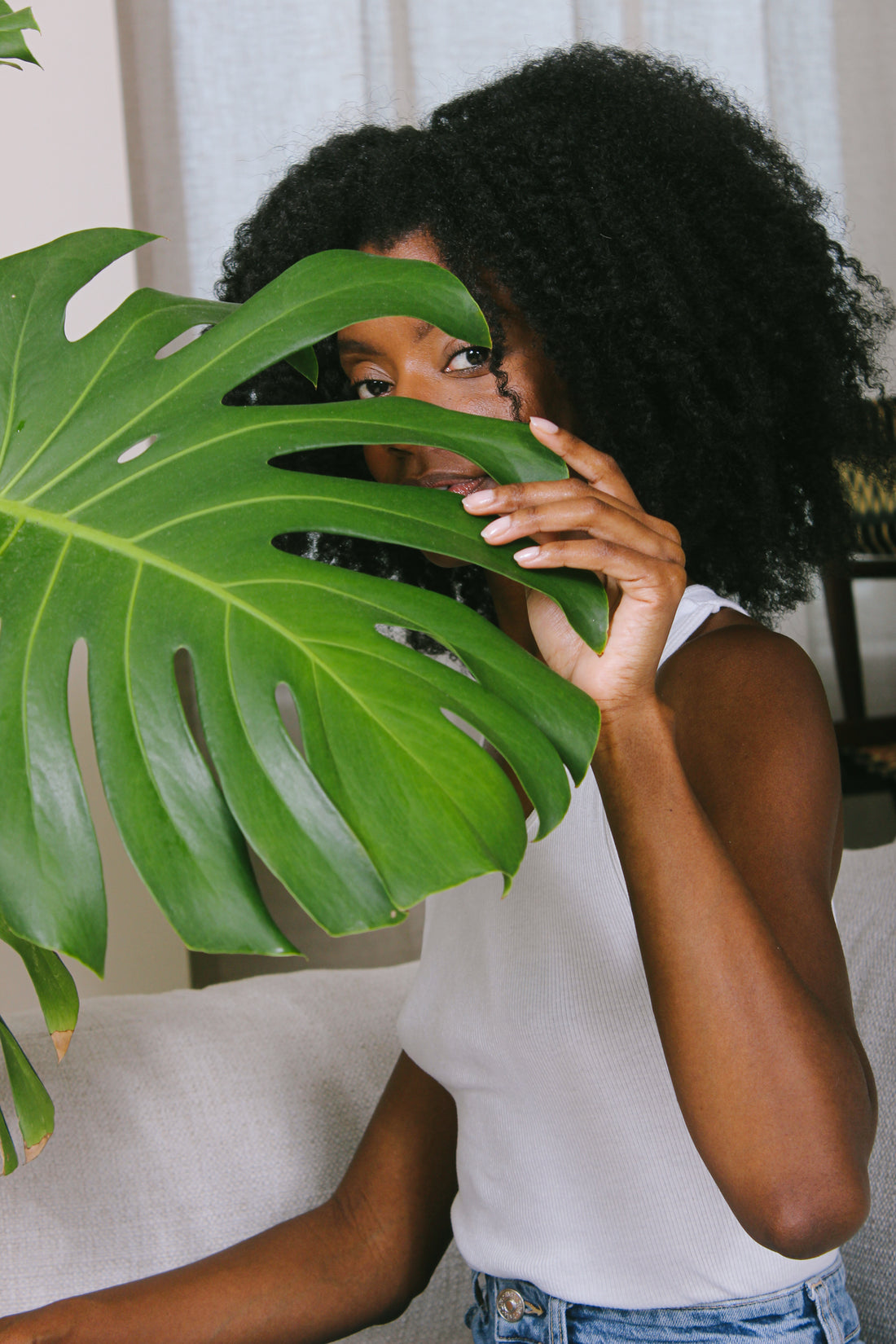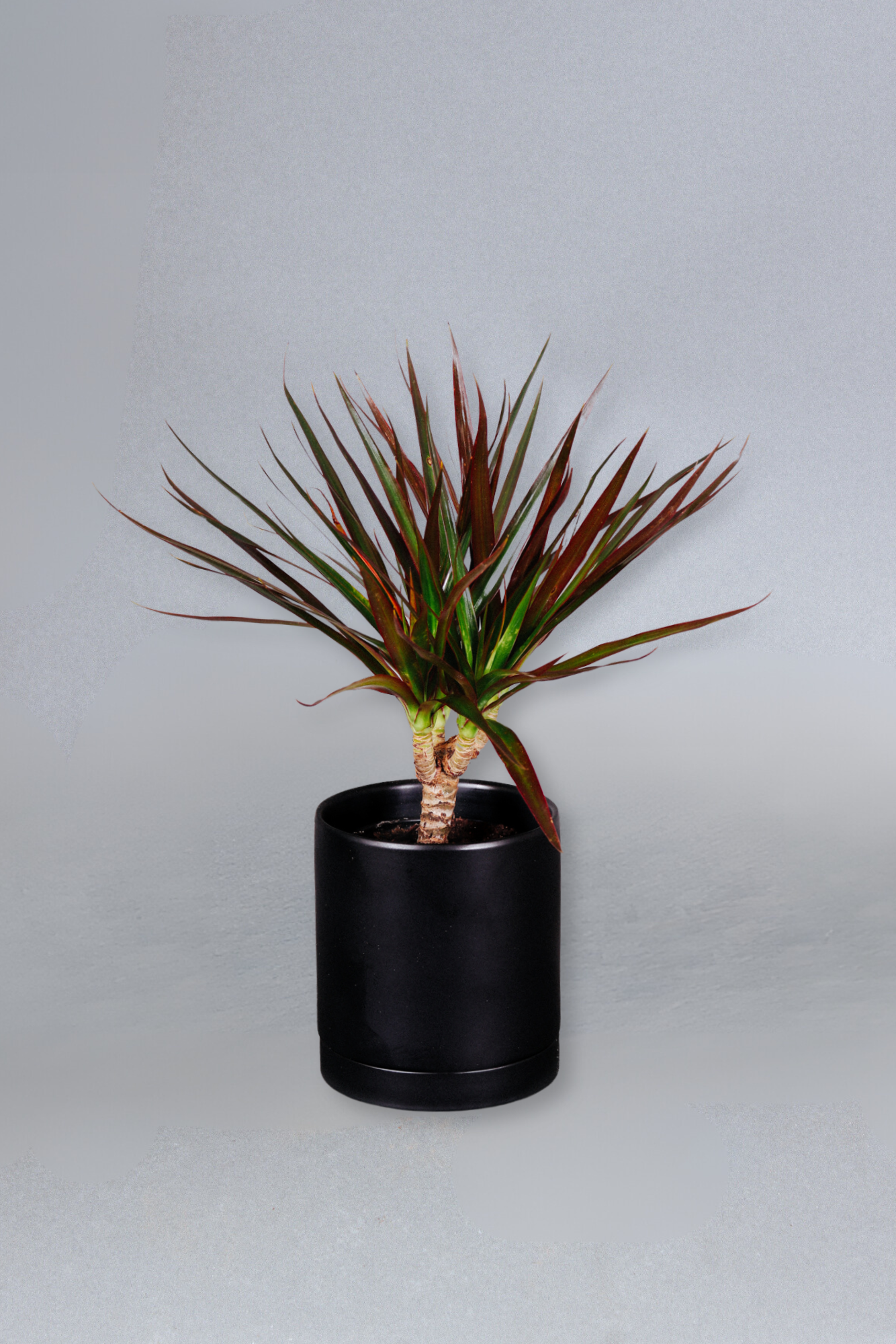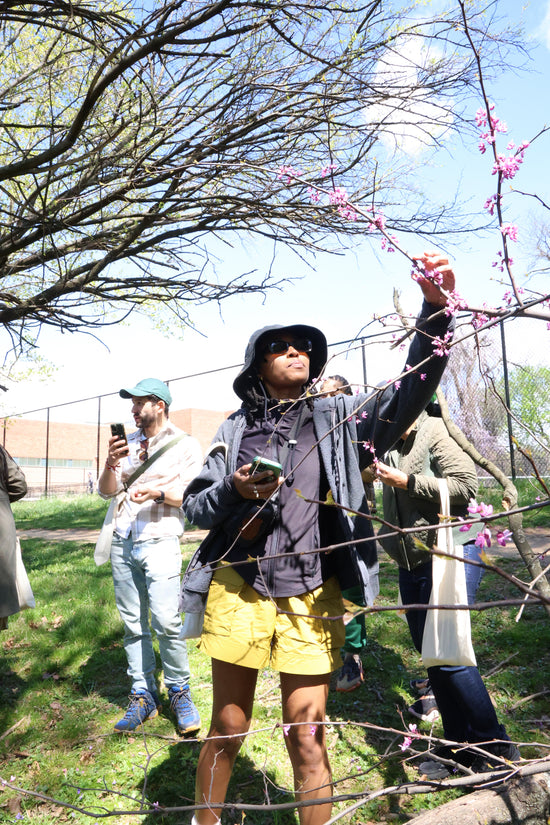A complete care guide breaking down the tropical needs of this highly adored, tranquil plant.
Maintenance: Intermediate | Climate: Warm + Humid | Light: Bright + Indirect | Watering: Semi-frequent | Pet Safe: No
CHARACTERISTICS
Under their native habitat in Central American rainforest canopies, Monsteras climb tall trees and grow large leaves that develop holes (known as fenestrations). This distinct development allows them to withstand the elements and lets sunlight research lower leaves. Indoors, these natural patterns continue when your plant receives climbing support and proper conditions. Reaching heights up to 15 feet with expansive, air-purifying leaves, the Deliciosa is a fascinating nature powerhouse.
LIGHT
The Monstera Deliciosa prefers medium to bright, indirect light. Sunlight filtered through blinds or curtains, and placement a few feet away from a bright window is ideal. Well-lit conditions produce more robust growth, but a room with medium-level lighting will keep your Monstera thriving, too. Keep it away from direct sunlight and rotate it regularly for even growth.
WATER
Water your Monstera generously once the top 50%-75% of soil has dried, allowing excess water to drain out. It can tolerate a brief period of drought in between waterings since it does not enjoy wet soil. Reduce watering frequency during fall and winter. To maintain the quality of your soil and leaf appearance, we do not recommend tap water. Check out our list of preferred water types!
AIR
The best way to keep your Monstera healthy, happy, and stress-free is to mimic a tropical environment in your space. To reproduce this, maintain temperatures between 65º-85º and create extra humidity. Provide a regular boost of humidity by:
- Misting the leaves 3-4x per week with non-tap water
- Adding a humidifier nearby
- Making a pebble tray that lives underneath the pot
- Placement in a bathroom or kitchen, if lighting is suitable
Also, keep your Deliciosa away from drafts, air vents, and heat sources. Extreme temperature fluctuations will cause your plant distress.
PLACEMENT
Monsteras symbolize honor, and respect for long life, manifested by their own longevity. Place them in your home as a reminder to live a healthy, joyous life or gift one to a beloved family member to show them your love + appreciation.
To build an intentional relationship with your Monstera, consider following respected feng shui practices by placing your Monstera in the center of your home to harness its energy for a long, healthy life. Any other spot in your home that would give this symbolism some attention while providing its environmental needs would be great. Review the key needs section above to give your plant the best environment possible.
POTTING & SOIL
We recommend a ceramic planter with plenty of drainage to provide an ideal moisture balance for your Monstera. When repotting, keep it in a planter of the same size or no more than 2 inches larger. To grow your Monstera, pot up in size annually for the first 1-2 years. Mature Monsteras can be repotted less often and will continue to grow when provided with climbing support. Read through Pruning and Propagating below to keep your plant at a manageable size.
A well-draining soil with amendments such as coco coir, perlite, and bark will provide a healthy balance of moisture retention, aeration, and drainage. This is important to ensure its roots have space to spread and are not suffocated by waterlogged soil.
SEASONAL CARE
When you’ve gotten the hang of it, Monstera care continues to be pretty simple for the entire year. Like all plants, there are a handful of seasonal notes to remember:
- Maintain comfortable temperatures and moderate humidity levels through fall and winter
- Move your plant a few feet away from cold or drafty windows
- If possible, bring it to a brighter area to make up for shorter daylight
- Water less frequently, and be sure to schedule it only once the soil has dried about 75%
- Avoid repotting, fertilizing, and other drastic changes that stress the plant
As a kind gesture, the large leaves on the Deliciosa will always appreciate a gentle dusting. This improves shine as well as photosynthesis, giving the plant more fuel for its winter rest. Let this routine be a reminder to be gentle with yourself, too.
PRUNING & PROPAGATION
Pruning is key for maintaining a healthy and robust Monstera Deliciosa. Removing damaged and old leaves allows the plant to direct all energy to healthy growth. Strategic pruning can also grow your collection through propagation. Propagating Monstera cuttings via water is a popular and easy method. Healthy stem cuttings from your Monstera can grow roots and become a new plant or return to the original pot for a fuller appearance.
To propagate your Deliciosa, you’ll need:
- Clean + sharp pruning shears or scissors
- Jar or glass of room temperature, non-tap water
- Healthy, mature Monstera
- Cinnamon (optional)
How to propagate your Monstera Deliciosa in 5 steps:
- Choose healthy stem(s) with a node or aerial root at the end. Make your cut below the node on a single vine or individual stem(s). Aerial roots are brown roots that grow above the soil.
- Allow your cutting to sit out for a few hours so the cut can callous before placing it in water. You can also sprinkle cinnamon on the exposed cut(s) to prevent infection.
- Fill your clean glass with non-tap, room-temperature water.
- Place your Monstera cutting(s) inside the jar and place it in a bright, indirect spot.
- Refresh with clean water + pot into soil when roots are at least 3 inches long.
Be aware that the longer your propagations sit in water, the harder it will be for them to transition to soil when they're potted. Never prune plants more than 10-20% at a time.
COMMON ISSUES
This intermediate-level plant may test your skills, but when changes are spotted early, your green thumb can understand its needs quickly. Some common issues your Monstera might experience are:
YELLOW LEAVES
Leaf discoloration on a Monstera is often due to overwatering, low light, pest or fungus infestations, and nutrient deficiency. To identify the cause of your yellowing or discolored leaves, check the soil moisture and review the Delicioa’s key needs above to give it proper care. The plant's oldest leaves also turn yellow as new growth comes in.
BROWN LEAVES, TIPS, OR EDGES
Dry, crispy leaves on a Monstera are a sign of underwatering, low humidity, leaf scorch from direct sunlight, or fertilizer burn. Start by assessing the soil moisture, lighting, and how much humidity you’ve provided.
CURLING LEAVES
Monstera leaves curl when the soil or air is very dry. It can also happen as a result of temperature stress and pest infestations.
DROOPING, LIMP LEAVES
Drooping leaves are common when your Monstera is under or overwatered, while adjusting to an environmental change, pest and fungus infestation, or when your plant needs a bigger pot. Check the soil moisture and read above to assess its environment.
SMALL GROWTH
Monsteras will see stunted growth under low lighting, poor nutrition, and without climbing support. Provide a pole or stick for your Monstera to attach to while it's young and still growing or after it has developed aerial roots.
PRO TIPS
- Monsteras are natural climbers. Keep it happy by staking your Monstera with a pole or wooden stick. In its early years, it will need to be trained to climb by gently attaching it to the stake with garden velcro or twine.
- Aerial roots are above-soil roots that Monsteras use to attach, absorb nutrients, and reach taller. As the plant matures, aerial roots grow longer. Let them hang, tuck them into the pot, or trim them back. Aerial roots are a sign of a healthy, long-living Monstera!
You're a pro now! If any of your questions haven't been answered, let us know!
-------
Tag us in your Grounded Monstera pics! @groun.ded








